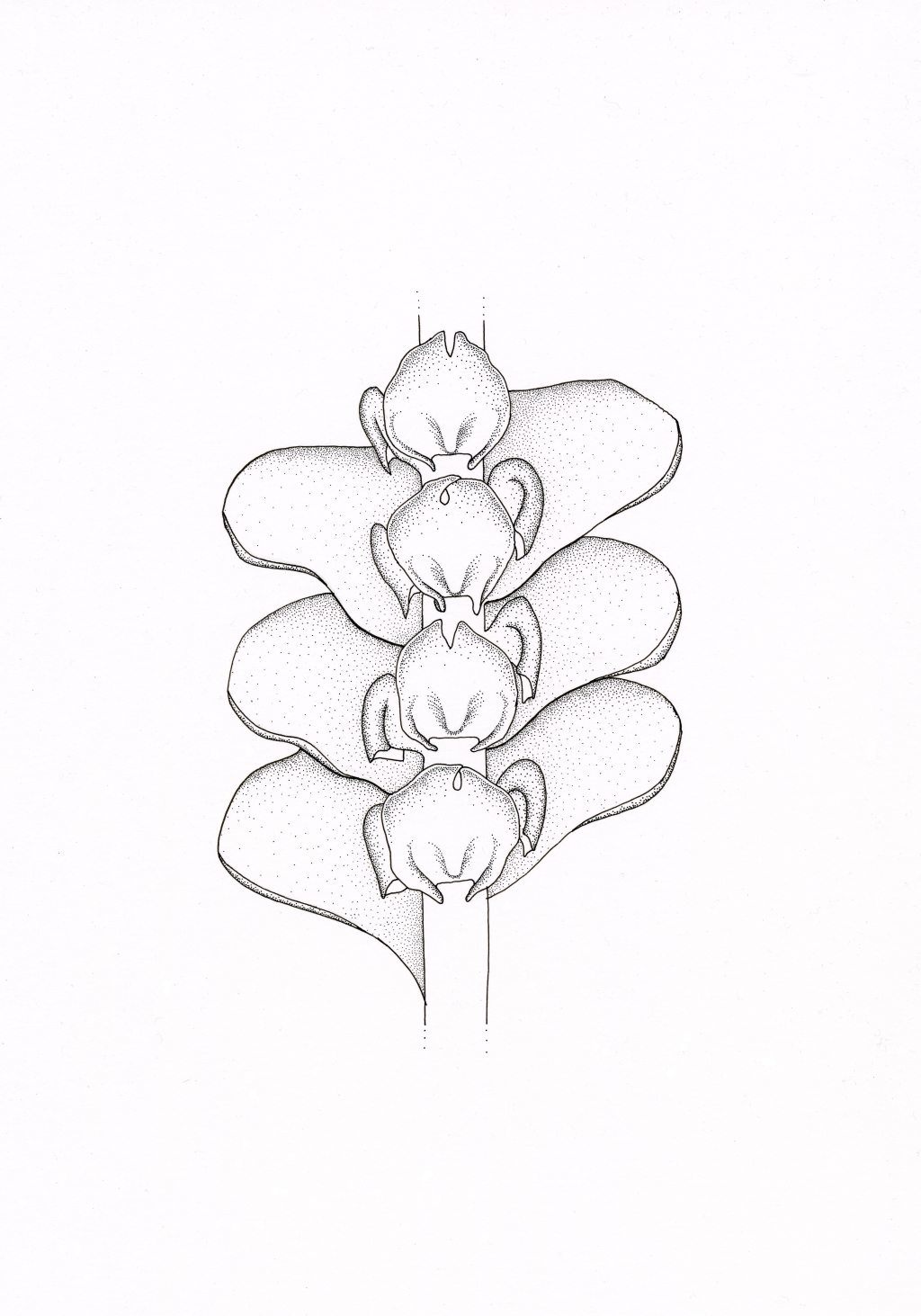Frullania squarrosula
(Hook.f. & Taylor) GottscheLithophytic, olive to olive-brown. Stems irregularly bipinnately branched. Mid stem and branch lateral leaf lobes broadly ovate, 0.7–1.15 mm long, 0.63–1 mm wide, rounded at apex, squarrose away from substrate when moist, imbricate; cells oblong, becoming irregular toward margins, 10–25 µm long and 10–15 µm wide at margins, 17–38 µm long and 12–24 µm wide near centre, 28–50 µm long and 15–40 µm wide at base, with prominent trigones throughout and occasional intermediate thickenings towards margins. Lobule galeate, 0.15–0.3 mm wide, 0.23–0.43 mm tall, with the main face facing the stem rather than substrate, with obtuse apex; cells irregular, 15–28 µm long, 8–18 µm wide, with prominent trigones and intermediate thickenings throughout. Stylus filiform, 2 cells wide at base, 7–8 cells long, with apical 2–3 cells uniseriate. Underleaf orbicular-quadrate to pentagonal, bifid 1/5–¼ of length, otherwise entire, 0.38–0.7 mm long, 0.4–0.65 mm wide, imbricate, canaliculate; sinus obtuse to acute; cells irregular, 10–28 µm long, 7–20 µm wide, with prominent trigones and intermediate thickenings throughout. Perianth cylindric, 3-keeled, c. 2 mm long, c. 0.7 mm wide, obtuse at apex with beak, smooth.
CVU, HNF. Recorded from Werribee Gorge and in the Dargo area, but likely to be more widespread in southern Victoria from rainshadow areas with rocky gorges and cliffsides. Also Qld, NSW, ACT and New Zealand.
A distinctive species with ovate lateral leaf lobes with apices that are clearly squarrose away from substrate when moist, galeate lobules that are rotated to face toward the stem rather than the main face facing toward the substrate, and 3-keeled perianths without tubercles.
 Spinning
Spinning